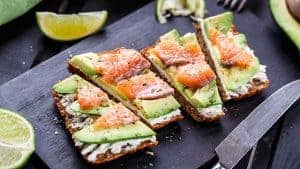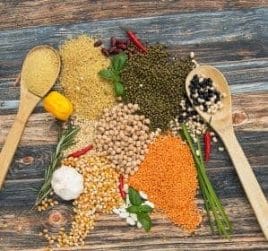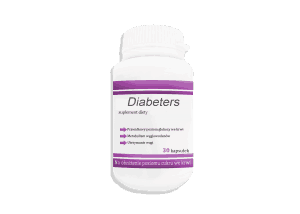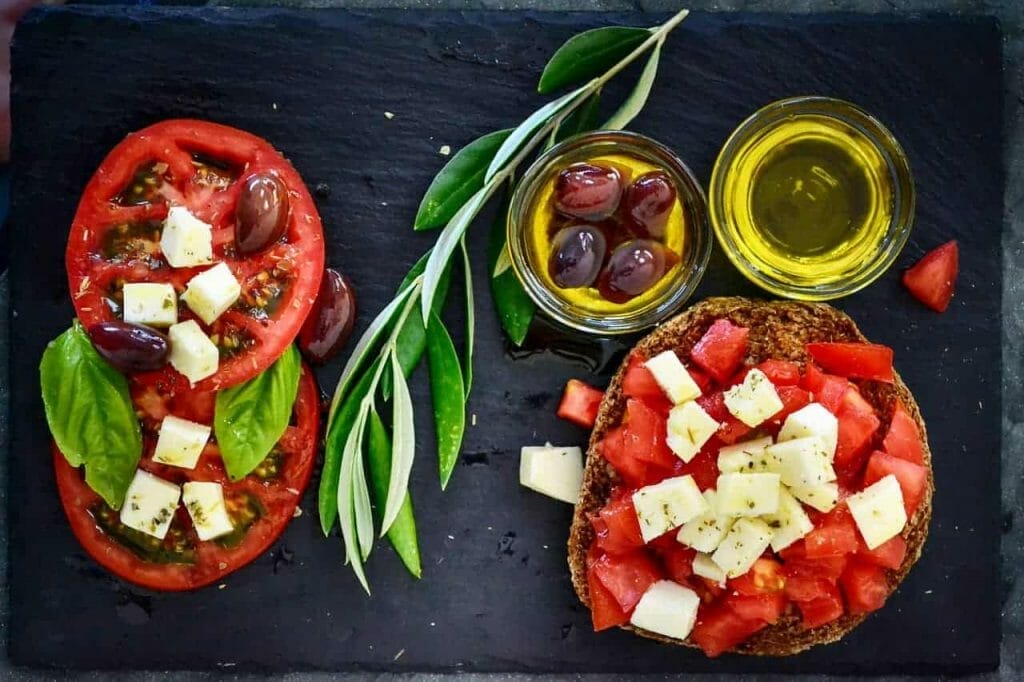Diabetes, due to its mass occurrence, is nowadays considered one of the main diseases of civilisation. What is worse, the number of patients is still growing and more and more often children suffer from diabetes. Diabetes is characterized by an increased level of glucose in the blood, therefore the basic method of treatment is to maintain normal sugar levels, which is greatly facilitated by a proper diabetic diet.
Table of contents
- 1 Causes of diabetes
- 2 Basic types diabetes mellitus
- 3 The importance of diet in the treatment of diabetes
- 4 Diabetic diet – the main principles
- 5 The basic sources of energy needed in a diabetic diet
- 6 What to eat with diabetes, and what to avoid?
- 7 Diabetic diet – menus. Examples of daily menu
- 8 Diabetic Diet – Recipes
- 9 Living with diabetes is not the end of the world…
Causes of diabetes

Diabetes mellitus(diabetes mellitus) is a metabolic disorder involving disturbances in the amount of glucose and its abnormal use by body cells.
It may be caused either by insulin deficiency or resistance of the body to its action.
Insulin is a hormone secreted by the pancreas, whose production increases as the level of glucose increases, and which is responsible for its transport to the cells and, as a result, for converting sugar into energy.
Unused as a source of energy, glucose accumulates in physiological fluids and intercellular spaces, causing a number of adverse changes in the body, including impaired fat breakdown. The most visible symptoms of diabetes mellitus are, in addition to high blood sugar levels, increased thirst, frequent urination, drowsiness and weakness.
Basic types diabetes mellitus
Type I diabetes mellitus, of immunological origin, affects mostly young people and is based on deficiencies in insulin production, hence the term insulin-dependent disease. Its symptoms are hyperglycemia, i.e. too high glucose level, body weight loss, strong appetite, frequent urination, weakness, presence of sugar and ketone bodies in urine. Type I often leads to pancreatic destruction and severe insulin deficiency.
Type II diabetes occurs mostly in middle-aged and elderly people, often obese and suffering from hypertension. Lifestyle and diet are major contributors to this condition, and it is caused when the initially normal amount of insulin produced by the pancreas cannot cope with processing the sugars consumed. The level of this hormone has to keep increasing, as a result of which the so-called insulin resistance of the tissues occurs, i.e. insulin resistance.
The importance of diet in the treatment of diabetes

The glycemic index (GI) plays a key role here. It is an indicator that determines the increase in blood sugar levels after the consumption of a particular food product.
Thus, it is assumed that products with a low glycemic index have an index of less than 50, medium GI is 55-70, high above 70.
Diabetics should prefer foods with a low GI, because foods with a high GI cause a rapid rise in sugar levels and an equally intense release of insulin.
However, the glucose level falls relatively quickly and the craving for food reappears. But that’s not all: the more high-GI foods we eat, the more insulin our pancreas has to produce.
If our diet is rich in carbohydrates, the body becomes resistant to insulin, which leads to a phenomenon called insulin resistance. Meanwhile, the modern consumer consumes a lot of products with an increased sugar content, without realizing it.
Simple sugars, mainly fructose, are present practically everywhere: in carbonated drinks, cakes and other confectionery, yoghurt, ketchup, dressings, even in bread. Simple sugars are quickly absorbed and rapidly raise glucose levels, and because there is an excess of them, the body begins to accumulate reserves, converting them into fat tissue.
In the case of diabetes, a proper diet and a change in lifestyle are necessary conditions for its successful treatment. And in spite of appearances diabetic diet does not have to mean some draconian menu, it is just a healthy way of eating, which, by the way, should be recommended to all people, regardless of whether they are diabetics or not.
Such a balanced diet should, moreover, be adapted to individual conditions, in particular age, body weight, severity of the disease, physical activity.
Diabetic diet – the main principles
The goals that should be achieved by following a diet are: normalization of sugar level in blood and at the same time preventing hunger attacks, elimination of so called snacking, especially sweets, regulation of metabolism processes, cholesterol level and blood pressure, achieving proper body weight, improving physical condition and well-being. To achieve this, in addition to an appropriate menu, some iron rules should be followed, namely:
- Each meal should contain proteins, fats and carbohydrates in specific proportions to provide the body with the right portion of energy.
- You should eat 5 meals a day (3 larger and 2 smaller ones), at intervals of approximately every 3-3.5 hours, in order to avoid adverse fluctuations in blood sugar levels.
- Overweight or obese people should not exceed 1300 kcal a day, people of normal weight 1600 kcal. If we lead a very physically active lifestyle, this value may be slightly higher.
- When choosing food products, we definitely prefer those with a low glycemic index, and avoid those with a high GI.
- Each meal should include a portion of vegetables, which not only have a low glycemic index, but also provide valuable fiber for the metabolism.
The basic sources of energy needed in a diabetic diet

Many people think that since we are dealing with a diet for diabetics, we should give up eating carbohydrates or fats. However, this is not the point.
Choose products with a low glycemic index and some fats, remember about vitamins and minerals, but you can’t completely eliminate the foods that are the basic sources of energy for the body, because it threatens its destruction.
1. carbohydrates
Diabetic diet does not mean that we should completely abandon carbohydrates, because they are the basis of energy supply to the body. However, you should reach for products with a low glycemic index, containing complex carbohydrates. These, in contrast to simple sugars, are released gradually and do not cause an increase in blood glucose levels and insulin secretion.
The best sources of such carbohydrates are vegetables and whole grain cereals. It is estimated that the proportion of these compounds in the diet should be about 45% of the total caloric content of daily food. Vegetables and cereal products also contain very important dietary fibre, which also has a beneficial effect on sugar metabolism. The intake of fruit, on the other hand, should not exceed about 300 grams per day.
2. fats
Although recently widely criticized, they are nevertheless an essential component of the menu, should constitute up to 35% of the energy value of the diet. It is just a matter of consuming as little as possible (10%) of saturated fats, in favor of mono- and polyunsaturated fats. The latter can be found primarily in fish and seafood, vegetable oils, seeds and nuts. It is also important to systematically control the level of cholesterol and triglycerides.
3. protein
This extremely important nutrient is found not only in meat, but also in dairy products and plant products, especially legumes, which are also a rich source of B vitamins and minerals. If you do reach for meat and cold cuts, choose lean, fat-free meat and dairy products, preferably natural, without flavourings. The proportion of protein in the daily energy requirement is 15 to 20%, in the case of obese people it may be higher – 20 to 30%.
What to eat with diabetes, and what to avoid?

Menu of a diabetic does not have to be monotonous and not very tasty. On the contrary, there is a sufficient amount of recommended food products, which can be used to compose tasty and varied meals. It is only necessary to follow the indications specified in this case.
Recommended products for a diabetic diet
- Diabetics should eat products containing a lot of fibre, which on the one hand regulates digestion and prevents spikes in glucose levels, and on the other hand provides a feeling of satiety. These include: whole-grain cereal products – groats, rice, pasta, oatmeal, barley and rye flakes, preferably cooked al dente.
- Vegetables such as lettuces, tomatoes, cucumbers, zucchini, asparagus, radishes, peppers, kale, onions, cauliflower, green beans, soybeans, lentils, and peas. It is worth knowing that cooked vegetables, such as potatoes, carrots and beets, have a higher glycemic index than raw ones. Berry and citrus fruit, plums, apples, pears and cherries can be eaten, but in limited quantities.
- Dairy products, preferably natural, yoghurt, kefir, buttermilk, lean or at most semi-skimmed white cheese.
- Lean meat, lean meats and fish, preferably marine species, which in addition to other valuable nutrients, contain Omega3 acids. The recommended way of preparing meat and fish is steaming, stewing without initial frying or baking.
- Fats – mainly vegetable oils.
- Nuts, seeds and seeds as a source of high quality fats and vitamins and minerals.
Diet in diabetes – prohibited products
- Absolutely avoid all kinds of fast food and ready-made meals, fatty meat and offal, yellow cheese and fatty dairy products.
- . Forget fried foods, . Limit your intake of salt and sugar (you can replace it with sweeteners), try to eat less potatoes and avoid white flour products.
- Avoid fruits with a high GI, such as bananas, grapes, watermelon or canned fruit, as well as fizzy drinks, which tend to have a very high sugar content.
- Avoid alcohol.
It is important not only to choose products with a low glycemic index, but also not to exceed the daily calorie limit. If you take care of the variety and taste of your meals, the diabetic diet will not be troublesome at all. Breakfast or supper of a diabetic does not have to be less appetizing than that of a healthy person.
Menu 1
- Breakfast – two slices of wholemeal bread, cottage cheese, lettuce, radish, green tea
- Second breakfast – raspberries, blueberries or blueberries with yoghurt and oatmeal
- Dinner – cauliflower soup, stewed skinless chicken breast, tomato and pepper salad, brown rice
- Snack – vegetable juice
- Dinner – baked cod in foil, pickled cucumber
Menus 2
- Breakfast – two slices of wholemeal bread with poultry ham and cucumber, bitter coffee or tea
- Second breakfast – salad of vegetables: for example, green lettuce and parsley, turnip greens, tomato, pepper, cucumber
- Lunch – cream of tomato soup, poultry and vegetable risotto
- Afternoon – colourful salad with cottage cheese
- Supper – omelette with spinach, carrot salad with apple
Menu 3
- Breakfast – bread with a little butter, natural yoghurt with cereal and fruit, carrot juice
- Second breakfast – scrambled eggs with spinach, tea
- Lunch – fish with bran, green bean salad
- Afternoon snack – fruit salad
- Supper – cottage cheese with vegetables
Diabetic Diet – Recipes
Colourful cottage cheese salad recipe
Tear the iceberg lettuce into smaller pieces, add diced tomato, green cucumber and yellow pepper, top with about 50 g of lean cottage cheese, season the whole with olive oil and balsamic vinegar.
Recipe for cod baked in foil
Wash and dry the cod fillet, rub with a little salt and pepper, lemon juice and a crushed clove of garlic. Grease the foil with olive oil, place the fish and wrap tightly. Bake for about 30 minutes, after unwrapping you can sprinkle with fresh dill.
Recipe for fish fried in bran
Wash and dry the hake fillet or other fish, cut the onion into rings and cover the fish, leaving it in the fridge for a few hours. Then whip the egg white to stiffness, salt the fish and coat it in egg white and bran. Fry in vegetable oil, after frying until golden brown, place on a paper towel to drain the fat.
Recipe for green bean salad
Steam the beans, add the peeled and diced tomato and finely chopped onion. Season with olive oil, lemon juice, garlic and possibly a little sugar.
Living with diabetes is not the end of the world…
As with any other disease, diabetes must not be underestimated. However, this does not mean that we cannot live a normal life, provided that we follow some necessary changes. First of all, as already mentioned, we must get used to a healthy, balanced low-glycemic and low-calorie diet, which will also benefit our figure.
Physical activity is no less important, as immobility promotes all kinds of diseases and obesity. Finally, in order to lower sugar levels and restore the normal functioning of the pancreas, we can support ourselves with supplements such as the plant-based Diabeters.
Read the review of the dietary supplement Diabeters


